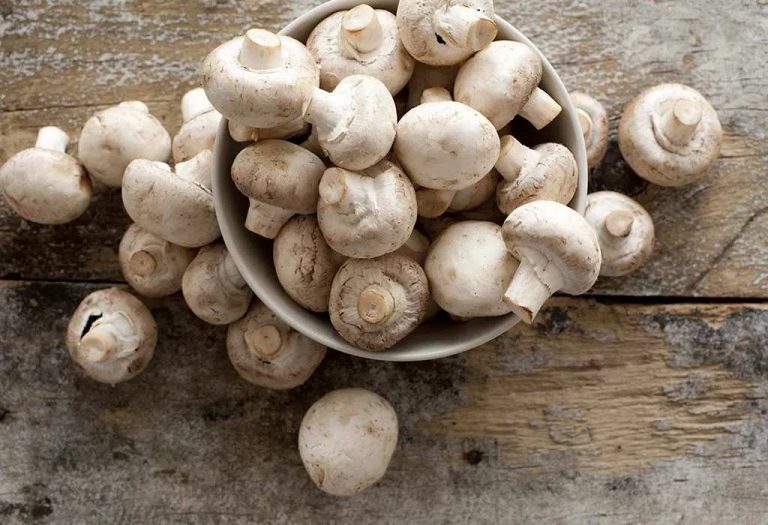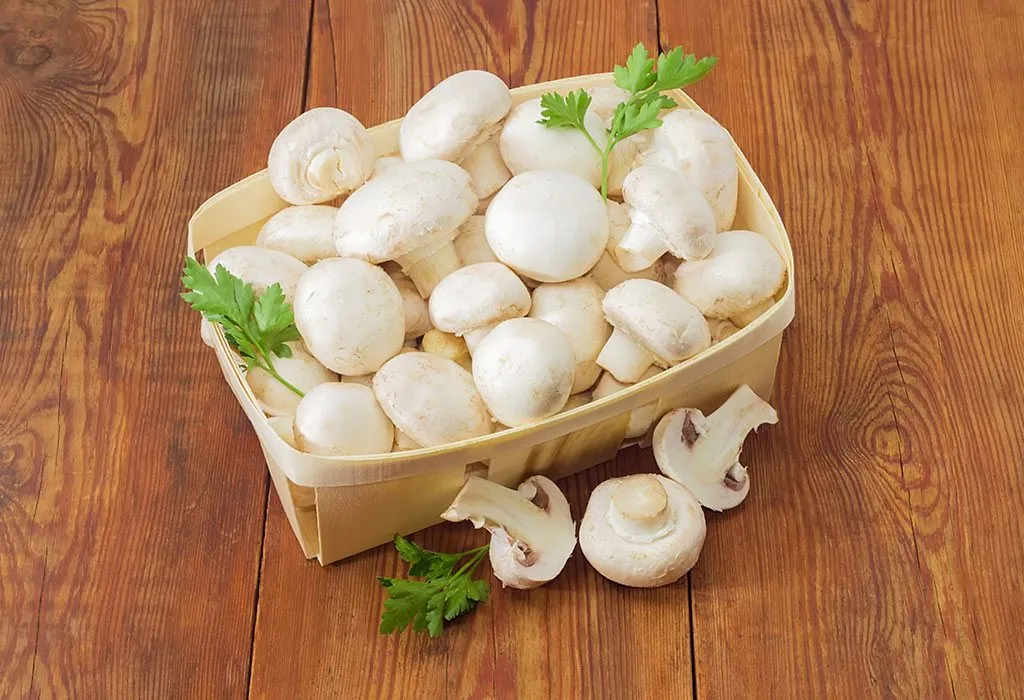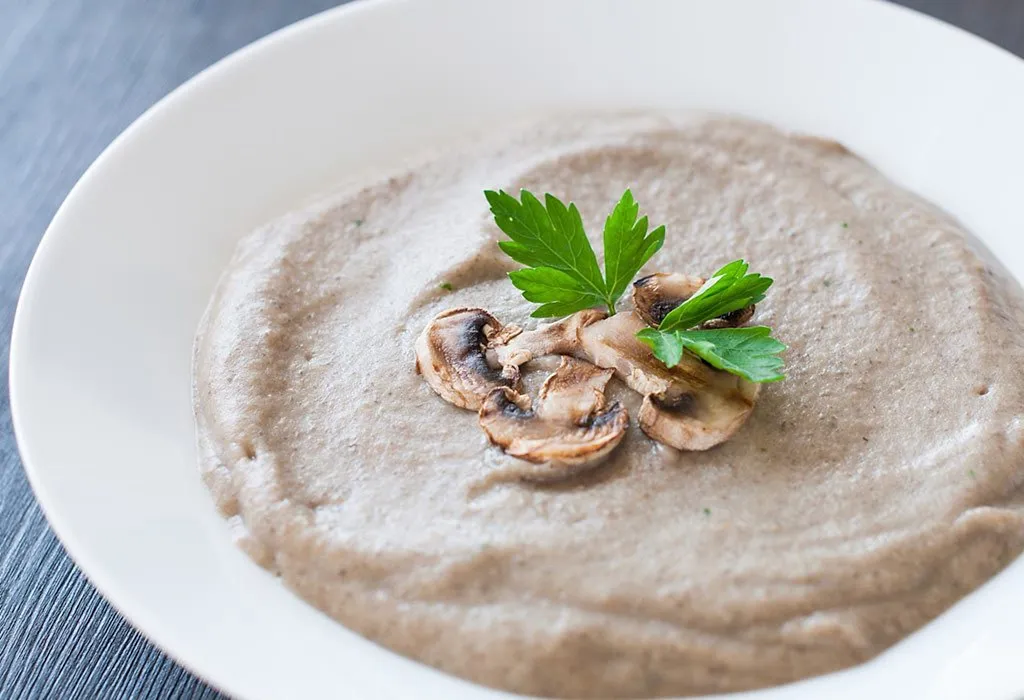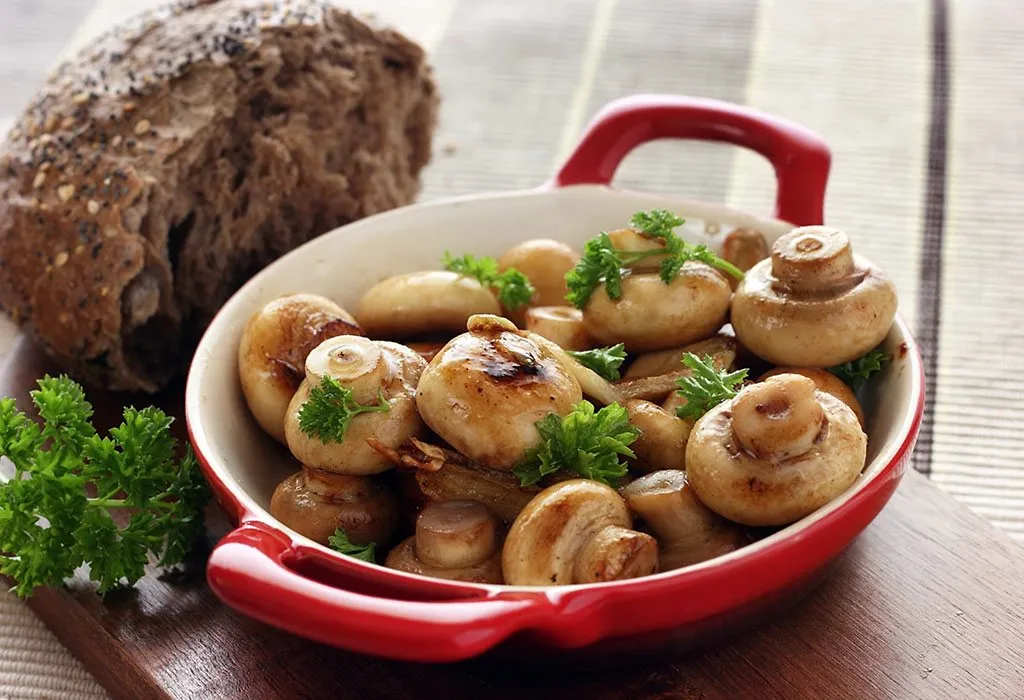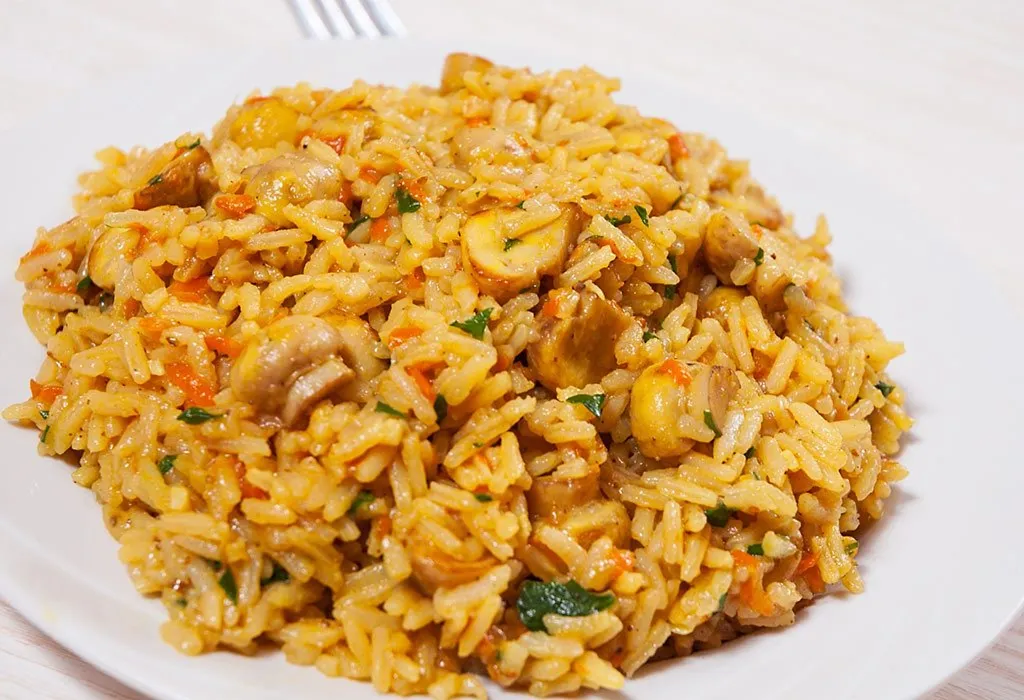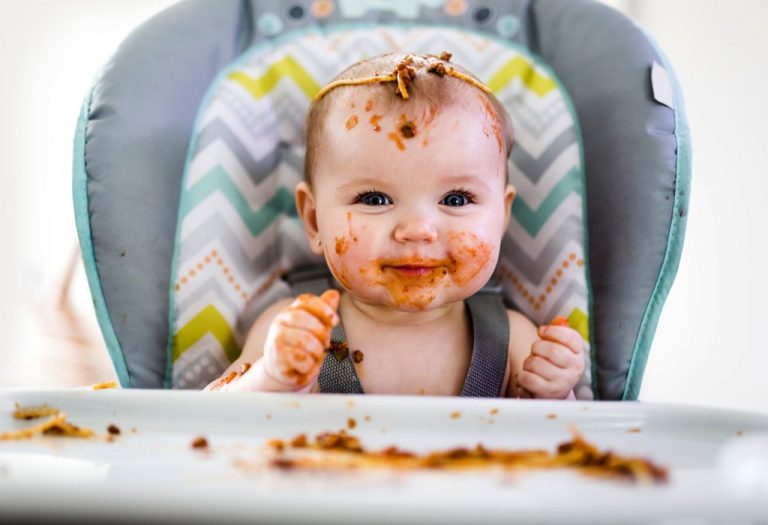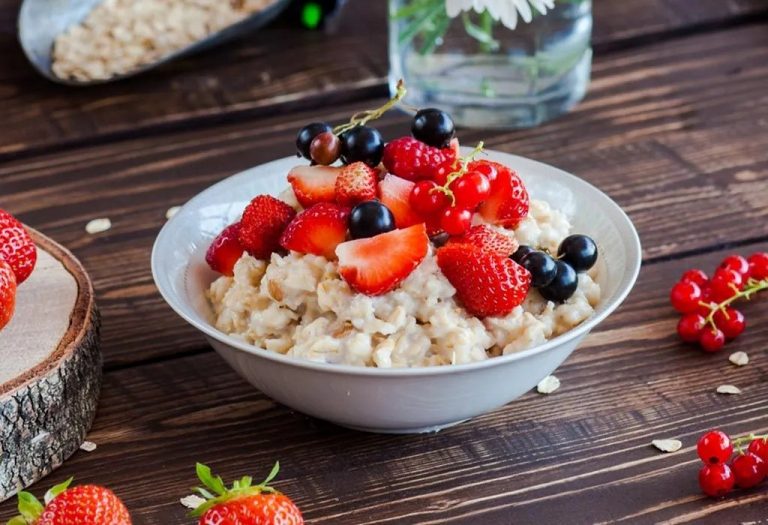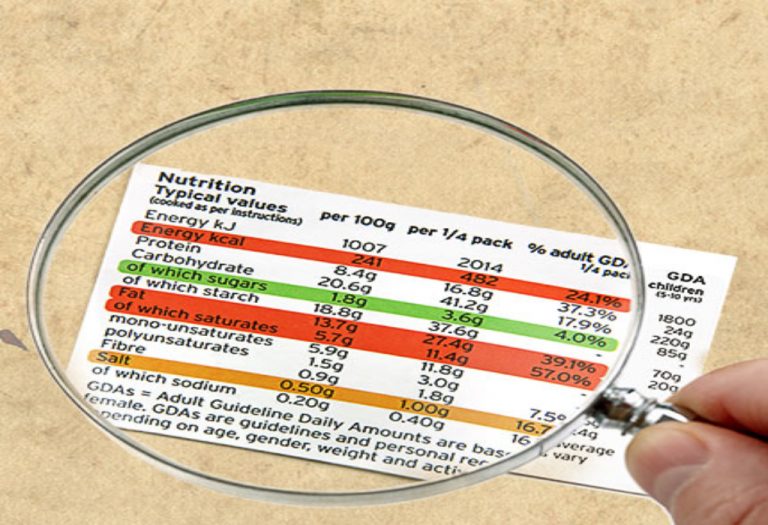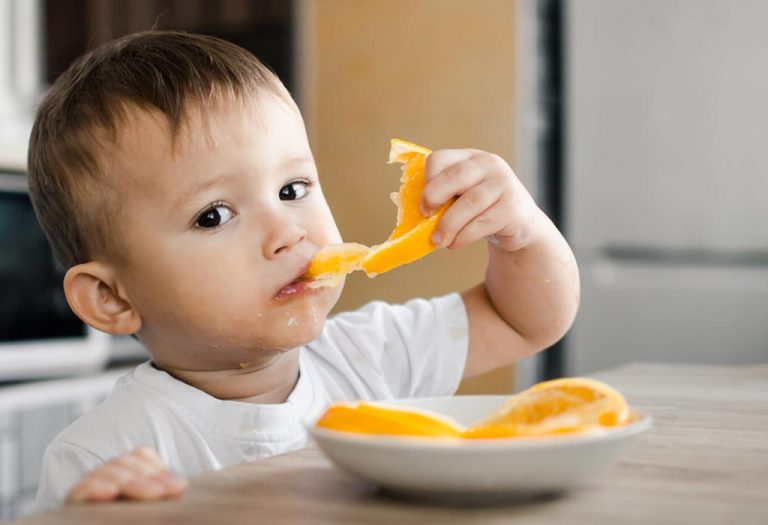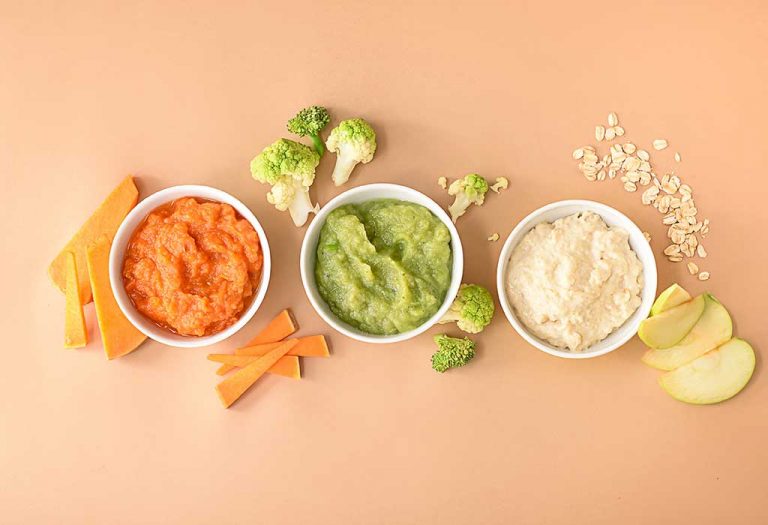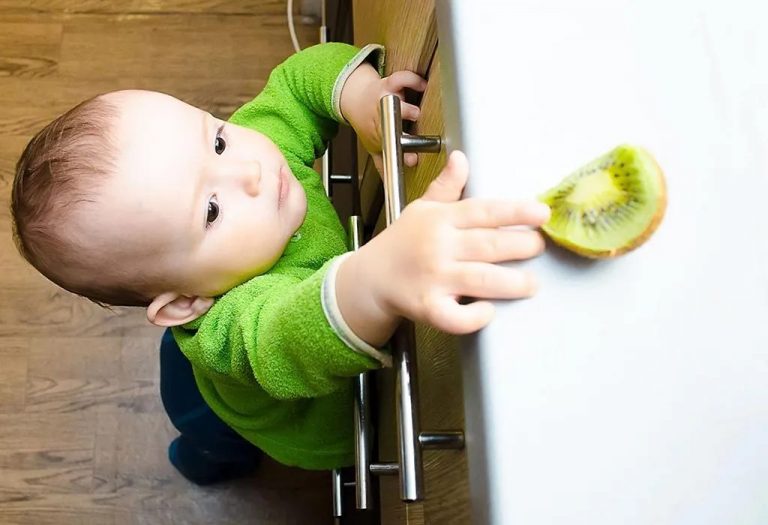Mushrooms for Babies – When to Introduce, Benefits and Recipes

You’ll find mushrooms in the produce section of the supermarket, usually near the fruits and vegetables. Mushrooms come in different types, from the common white button mushrooms to more unique kinds like shiitake or oyster. They have a special flavor and are tasty, but you have to be careful with them. If they’re not picked or cooked the right way, they can make your stomach upset or even cause food poisoning.
Many parents might wonder if it is safe to feed their baby mushrooms and from what age a baby can eat mushrooms? A question that often comes up is, “Can babies have mushrooms?” Read on to learn more about this.
Can Babies Eat Mushrooms?
There are no regulations or guidelines as to whether you should or shouldn’t feed babies mushrooms. Mushrooms from a grocery store are safe for babies to eat, but it’s crucial to avoid wild mushrooms because some types can be dangerous or even lethal (1). Wild mushrooms can cause severe illness or even be life-threatening, so always choose those sold at reputable stores.
Overall, mushrooms are generally safe for children to eat once they’re ready for solid foods. However, because mushrooms are a type of fungus, they could cause gastrointestinal issues in some babies who are sensitive to them. If your baby has a history of digestive problems, you might want to introduce mushrooms cautiously and monitor for any adverse reactions.
At What Age Can a Baby Eat Mushrooms?
When can babies eat mushrooms? There are differing opinions on this. While one says introducing mushrooms to babies should be put off until they are at least 10 months or older, the other camp believes a 6 month baby is old enough to eat mushrooms.
Either way, everyone agrees that mushrooms should be cooked well before being served to babies, as the bacteria contained in them will be broken down during the cooking process.
Nutritional Value of Mushrooms
Here are the nutrient value of mushrooms per 100 gram.
| Nutrient | Amount (per 100 grams) |
| Calories | 43 |
| Protein | 3.1 grams |
| Dietary Fibre | 0.4 grams |
| Potassium | 223 mg |
| Phosphorous | 110 mg |
| Omega-6 Fatty Acids | 97.3 mg |
| Sugars | 1.2 grams |
Benefits of Mushroom for Babies
The health benefits of consuming mushrooms are as unique in its diversity as the nature of the food itself.
1. Boosting Liver Health
Mushrooms are one of those rare foods that help detoxify the liver. They protect the liver from damage (2). This is particularly helpful for babies and young children as they are more susceptible to jaundice and hepatitis B, which are diseases that cause liver damage.
2. Vitamin D
Most vegetarian diets do not contain adequate amounts of Vitamin D. Vitamin D can be obtained from dairy products and from sunshine. However, living under the Indian sun, most parents avoid exposing their babies to sunshine unless it is winter. Mushrooms are a source of Vitamin D and have the potential to be the only non-animal, unfortified Vitamin D source (3).
3. Iron
While non-vegetarian food contains ample iron, it is mostly green leafy vegetables and nuts that provide iron in a vegetarian diet. Iron is an essential component in haemoglobin that is found in red blood cells and is required in the creation of new blood cells. Certain varieties of mushrooms, such as oyster mushrooms, contain higher amounts of iron than other varieties, such as button mushrooms.
4. Boosting the Immune System
Mushrooms contain biochemicals that strengthen the immune system (4). As a baby’s immunological health wanes after three months of age (immunity transferred by the mother lasts about 3 months), modulating the immune system helps a baby stay healthy and recover from ailments quickly.
5. Antioxidants
Mushrooms contain antioxidants that help rid the body of “free radicals” that are formed as a by-product during the process of normal metabolism (5). Free radicals can cause damage to cells and DNA. Another factor is that anti-oxidants consumed as supplements cannot be used efficiently by the body, as can anti-oxidants naturally occurring in foods.
6. Rich in B Vitamins
Mushrooms are a good source of B vitamins, such as niacin, riboflavin, and pantothenic acid. These vitamins play a critical role in energy metabolism, nervous system function, and skin health. Including mushrooms in a baby’s diet can contribute to their overall nutritional needs.
7. Promotes Healthy Digestion
Certain types of mushrooms contain dietary fiber, which is important for maintaining a healthy digestive system. The fiber content in mushrooms can help prevent constipation in babies and support regular bowel movements. As babies transition to solid foods, having a source of natural fiber can be beneficial for their digestive health.
Tips to Choose the Right Mushrooms
- Always buy fresh mushrooms. If buying packed mushrooms from a store, pick ones that were delivered the same day (6).
- Good mushrooms are dry and do not have cracks.
- The “gills” (the underside of the cap) should be brown or pinkish. Do not pick one with black gills.
- If they are not packed in plastic, you should be able to smell them. There should be little to no smell. If it smells musty, do not pick it.
- Avoid canned mushrooms as they contain preservatives.
How to Store and Prepare Mushroom?
Mushrooms can be stored safely for up to a week in a refrigerator. Store them in a paper bag in the fridge or on a tray with a paper towel over it. Do not keep them in an air-tight plastic bag.
When preparing mushrooms, do not soak them in water, as they will lose their flavour. Simply rinse them off quickly or, even better, wipe them with a damp cloth.
Allergy Risk of Mushrooms for Infants
As with most foods, there is a small possibility of allergy to mushrooms. The population that is allergic to mushrooms is not clearly known, but it is estimated at around 1%.
However, raw mushrooms could release spores, triggering a pollen allergy that affects breathing. This type of allergy is much more common.
How to Prepare Mushrooms for Baby-led Weaning?
Babies need food that’s easy to grasp, soft enough to chew and cut into safe sizes. Below are some guidelines for preparing mushrooms in BLW, depending on your baby’s age.
For 6 to 12 Months
- When preparing mushrooms for babies between 6 and 12 months, focus on making them soft and easy to chew. You can sauté or steam mushrooms until they are very tender.
- It’s best to cut the mushrooms into large strips or finger-like pieces, as these shapes are easier for babies to grasp and chew without posing a choking hazard.
- Make sure to remove any tough stems or other parts that could be difficult to chew, and always supervise your baby while they’re eating.
- Remember to introduce one new food at a time to monitor for allergic reactions.
For 12 to 24 Months
- As babies get older, they can handle a bit more texture, but food should still be soft enough to avoid choking risks. Continue to cook mushrooms until they’re tender, but you can start to experiment with different flavors and seasonings to expand your baby’s palate.
- Depending on your baby’s chewing ability, you can cut the mushrooms into smaller pieces or slices. Smaller, bite-sized pieces work well at this stage.
- Consider mixing mushrooms with other foods like scrambled eggs, pasta, or soft vegetables to create a balanced meal. This can encourage your baby to try different textures and flavors.
Delicious Recipes With Mushrooms for Your Baby
Since mushrooms are usually a side dish, one may be at a loss as to how it could be incorporated in a baby’s menu.
1. Puree
A fantastic way to introduce mushroom into a baby’s diet is mushroom puree for baby.
What You Will Need
- Button Mushrooms (finely chopped) – 300gms
- Onion (finely chopped) – 1 small
- Potatoes (diced) – 150gms
- Cream Cheese – 50gms
- Butter
- Water – 3/4th Cup
Steps to Prepare
- In a hot pan, heat some butter and sauté the onions and mushrooms in it until transparent. (medium flame)
- Add the water and the potatoes to this and cook further, for about 20 minutes.
- Once cooked, blend the mixture in a mixer.
- Add the cream cheese and blend once more.
2. Butter Mushroom
You can lower the amounts of garlic, black pepper, herbs and salt as required for your baby’s palate.
What You Will Need
- Button Mushrooms (chopped) – 200gms
- Garlic (chopped) – 10gms
- Butter – 2 tablespoons
- Herbs (dried or fresh coriander, parsley, basil or oregano) – 1 teaspoon (dried) or 2 teaspoons (fresh, finely chopped)
- Black Pepper – ½ teaspoon
- Salt – to taste
Steps to Prepare
- On a low flame, heat the butter and cook the garlic in it.
- When the aroma of garlic fades, add the chopped mushrooms and continue sautéing.
- The mushrooms release a lot of water. Cook until the water dries but the mushrooms are still moist.
- Now, mix the black pepper, herbs, and salt in and turn off the flame.
This dish can be eaten with rotis, chapattis, plain rice, etc. Note that if you use salted butter in the preparation, add less salt in the last step.
3. Mushroom Pulao
A pulao is a great item into which one can incorporate cooking mushrooms for babies.
What You Will Need
- Button Mushrooms (chopped) – 200gms
- Oil – 2 tablespoons
- Basmati Rice – 200gms
- Onion (chopped) – 1 large
- Water – 1.75cups
- Lemon juice – 1 teaspoon
- Garlic – 10gms
- Ginger – 10gms
- Green Chilli – 1
- Spices ( ½ teaspoon cumin, 1-inch cinnamon, 2 cardamom, 2 cloves, 2 bay leaf)
Steps to Prepare
- Wash the rice and then proceed to soak it for half an hour.
- Heat the oil and cook the spices in a pressure cooker.
- As the spices begin crackling, add the chopped onions and sauté until it gets a golden hue.
- Crush and mix the garlic, ginger, and green chilli into the onions.
- Add the mushrooms and sauté for about 5 minutes.
- Now, add the soaked and dried rice and mix it in with the rest.
- Add the water, lemon juice, and salt to taste.
- Close the lid and cook for 2-3 whistles.
Your mushroom pulao is done! Optionally, you can garnish with coriander leaves.
FAQs
1. Are certain types of mushrooms better for babies?
Common types of mushrooms like white button, cremini, and portobello are generally considered safe for babies. However, some wild mushrooms can be toxic, so it’s best to stick to store-bought varieties. If you’re unsure about which mushrooms to use, choose those commonly found in supermarkets or consult a healthcare professional.
2. How should I store mushrooms for baby food?
Mushrooms should be stored in a cool, dry place, ideally in the refrigerator. Keep them in their original packaging or in a paper bag to prevent moisture buildup, which can cause them to spoil quickly. Avoid using airtight containers, as they can trap moisture and cause mushrooms to get slimy.
3. Is it okay to freeze cooked mushrooms for baby meals?
Yes, you can freeze cooked mushrooms for future baby meals. To do this, cook the mushrooms until they are soft and then let them cool. Place them in a freezer-safe container or bag, removing as much air as possible. When you’re ready to use them, simply thaw and reheat thoroughly before serving to your baby.
4. Can babies eat raw mushrooms?
It’s not recommended to give raw mushrooms to babies. Raw mushrooms can be difficult to digest and may contain harmful bacteria. Always cook mushrooms thoroughly to ensure they’re safe for your baby to eat. Cooking also enhances the flavor and texture, making them more appealing to babies.
Mushrooms are a delicious food that have a unique flavour. They can be used in a variety of dishes, and add a nice flavour to them. Though it may be confusing about how to feed your little one mushrooms, picking the right ones and cooking them well can make this one of your baby’s favourite foods too!
References/Resources:
1. White Button Mushroom; Solid Starts; https://solidstarts.com/foods/mushroom-white-button/
2. Soares. A, Sá-Nakanishi. A, Bracht. A, Gomes da Costa. S, et. al.; Hepatoprotective Effects of Mushrooms (Molecules); National Library of Medicine; https://www.ncbi.nlm.nih.gov/pmc/articles/PMC6270077/; July 2013
3. 7 health benefits of mushrooms; UCLA Health; https://www.uclahealth.org/news/article/7-health-benefits-of-mushrooms
4. Manikandan. K; Nutritional and Medicinal values of Mushrooms (Mushrooms: Production, consumption and Marketing); ResearchGate; https://www.researchgate.net/publication/236646616_Nutritional_and_Medicinal_values_of_Mushrooms; January 2011
5. Friedman. M; Mushroom Polysaccharides: Chemistry and Antiobesity, Antidiabetes, Anticancer, and Antibiotic Properties in Cells, Rodents, and Humans (Foods); National Library of Medicine; https://www.ncbi.nlm.nih.gov/pmc/articles/PMC5302426/; November 2016
6. Mushroom Poisoning; Better Health Channel; https://www.betterhealth.vic.gov.au/health/healthyliving/mushroom-poisoning
7. Mushrooms; Harvard T.H. Chan; https://www.hsph.harvard.edu/nutritionsource/food-features/mushrooms/
Also Read:
Introducing Avocado to Babies
Is Brown Rice Good for Infants
Can I Give My Baby Cauliflower
Is Sabudana Healthy for Babies?
Health Benefits of Tomatoes for Infants
Was This Article Helpful?
Parenting is a huge responsibility, for you as a caregiver, but also for us as a parenting content platform. We understand that and take our responsibility of creating credible content seriously. FirstCry Parenting articles are written and published only after extensive research using factually sound references to deliver quality content that is accurate, validated by experts, and completely reliable. To understand how we go about creating content that is credible, read our editorial policy here.






